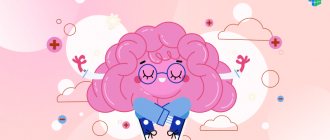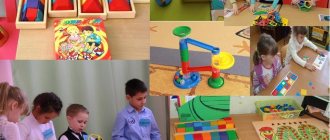To study well, work, and achieve success in life, it is important to use different types of thinking.
And we will talk about what types and forms of thinking exist in the article. And we will also answer the question: how to develop thinking in an adult?
Don't forget to subscribe to our Telegram channel - there is a lot of useful materials from the world of education. And keep an eye on promotions and discounts from the company to learn even more profitably.
Help is needed?
Entrust your work to a PhD candidate!
A few words about the concept
If we rely on the definition that Wikipedia gives us, then thinking is the mental process of modeling the laws of the surrounding world on the basis of axiomatic provisions.
The term has many simpler definitions.
Thinking is a human cognitive activity, the result of which is a thought in the form of an idea, meaning or concept.
In neuropsychology, thinking is considered one of the highest mental functions, which has a motive, a goal, a system of actions and control.
This phenomenon began to be studied back in ancient times. Philosophers and scientists considered it not from the point of view of psychology, but from the position of philosophy and logic. Many philosophers called thinking an essential property of man. This is clearly demonstrated by Descartes’ famous saying: “I think, therefore I exist.”
This process is related to the functioning of the brain. However, a person’s ability to think in one way or another arises in the process of life experience, culture, norms of language, logic and other factors.
The stages of development of thinking can be seen in the table.
Abstract thinking
Our world is full of amazing things, and it exists according to its own laws, which often defy logic and the rational mind. Operating only with precise knowledge and instructions, we can lose sight of much of what has not yet been explored and keeps a secret. And it is precisely when a person comes into contact with something that is unknown to him that his abstract thinking is activated, allowing him to reason, make some conclusions, and make guesses. This type of thinking is very important, but in order to understand why this is so and what it generally is, it is necessary to delve into its description, forms and types, examples and methods of development. This is what we will do in the article. Read more…
4
Properties
A person perceives the surrounding reality based on his thinking. And everyone has their own. That is why we all look at the same things differently. But all people are united by certain properties of thinking. In psychology there are several of them:
- Focus. Every thought process has its ultimate goal.
- Logic. Contrary to popular jokes and anecdotes, women also have logic, but it is inextricably linked with feelings.
- Development. Only children at an unconscious age and people with mental disabilities have undeveloped thinking.
- The ability to form concepts. We can all characterize an object or phenomenon, compare it with similar ones, etc.
- Subjectivity. As we have already found out, everyone thinks differently. Objectivity is hampered by our feelings, experiences, mentality, etc. But it cannot be said that someone thinks correctly and someone does not. Everyone has their own truth.
- Linearity in time. Some focus their attention on the future, others reflect on the past. But everyone is trying to find a solution to the current situation.
I recommend that you familiarize yourself with a selection of books about thinking.
Forms
Thinking has three main forms:
- Concept. It is a thought that reflects the most significant, general and distinctive features of various objects and phenomena. A concept arises as a result of the cognitive activity of the brain, i.e. thinking.
- Judgment. This is a thought that contains an affirmation or denial of something about an object, its properties or connections between several objects. The consistent logical connection of several judgments helps us solve various problems and find answers to questions. This sequence is called reasoning.
- An inference is the result of a chain of judgments, that is, the very answer to the question that we are looking for when building our reasoning. Inference gives us new knowledge and understanding of objects and phenomena of the surrounding world. Inferences can be deductive, inductive or analogical.
Mathematical thinking
Mathematical thinking is abstract theoretical thinking, the objects of which are devoid of materiality, but at the same time they can be interpreted in any arbitrary way with only one condition - the relationships specified between the objects must be preserved. Considering that mathematics is the science not only of equations and formulas, but also of structures, order and relationships, the main difference between mathematical thinking and ordinary (everyday) thinking is that it instills and develops in a person the skill of critical perception of the world around him, the desire and ability to “dig deeper” and find the truth, understand the causes and essence of a wide variety of concepts and phenomena. Let's talk about it in more detail. Read more…
2
Components
Depending on the specific task that needs to be solved, as well as the nature of the information to be processed, we use different mental operations. They are called components of thinking.
More than 100 cool lessons, tests and exercises for brain development
Start developing
There are several components:
- Analysis. This is the study of an object or phenomenon by dividing it into parts.
- Synthesis. The opposite concept to analysis. Means the study of something through the connection of disparate parts into one whole.
- Comparison. Comparing the properties of different objects to find their similarities and differences.
- Abstraction. Distraction in the process of cognition from unimportant details in order to highlight important features.
- Specification. The opposite concept to abstraction. In this case, a person turns his attention to particulars, studying them separately.
- Generalization. The transition from the particular to the general, i.e., the unification of objects and phenomena by highlighting common features and properties.
- Classification. Distribution of objects or phenomena into classes, groups, departments according to general characteristics.
Spatial thinking
Do you know people who can easily and quickly navigate an unfamiliar place without using a map? Have you envied those who can draw well? Have you studied the life and works of Leonardo da Vinci with enthusiasm and delight? All these traits are characteristic of those who have developed visual-spatial thinking. Spatial thinking is a type of mental activity that ensures the creation of spatial images, thinking in terms of images and operating with them in the process of solving practical and creative problems. What benefits does this skill have? How to develop it? This is what our article is about. Read more…
8
Main types and their characteristics
Experts from different fields of psychology cannot agree on a common opinion not only regarding the definition of this term, but also its classification. Here I will talk about the most popular types of thinking.
By content
The following types are distinguished:
- Visually effective. Based on direct interaction with the subject in order to study it. Develops in a child from birth until approximately 1.5 years. For example, in order to study the structure of a toy, a child can break it, chew it, or taste it.
- Visual-figurative. Involves perception of the world through images. Examples: a fashion designer comes up with a new collection of clothes, a stylist creates a new image, a designer is working on a project. This type prevails among artists, poets, and musicians.
- Abstract (verbal-logical). Operating with concepts that a person cannot touch, see or hear. When studying an object or phenomenon, a person takes past experience as a basis and adds his imagination to it.
By the nature of the tasks being solved
Based on the nature of the goals set and the tasks performed, the following are distinguished:
- Theoretical (empirical). Allows you to compare, analyze and classify accumulated knowledge and ideas, expressing them in the form of norms, rules, laws, concepts.
- Practical. When all theories are tested in practice. Any diagrams, drawings, projects, plans transform theoretical concepts into reality. A disembodied thought takes on a physical form.
By degree of deployment
The following types are distinguished:
- Discursive (analytical). Thinking based on logic and reasoning. It is as conscious as possible, extended over time and has clear stages.
- Intuitive. Based on sensory perception. It proceeds quickly, minimally consciously and has no distinct stages.
According to the degree of novelty and originality
According to this criterion, the following are distinguished:
- Reproductive. Based on ready-made solutions, sources and templates. Aimed solely at reproducing previously acquired knowledge and images.
- Productive (creative). The opposite of reproductive. Involves the manifestation of one’s own fantasy and imagination. A person here acts as a creator, creating his own original ideas and projects.
By function
Based on the functions performed, the following types are distinguished:
- Critical. Aimed at identifying shortcomings in the thinking of other people.
- Creative. Involves generating your own ideas rather than evaluating the thoughts of others.
By degree of reflection
Reflection is a look inside oneself, deep into one’s consciousness, as well as at the result of one’s own actions and their rethinking.
Taking this concept as a basis, psychologists have identified another classification of types of thinking:
- Analytical. Allows us to divide objects, phenomena and situations into parts and consider them in more detail. Find cause-and-effect relationships, observe, compare, draw conclusions and find what is important. As a rule, it proceeds for a long time and consistently.
- Intuitive. Transient in time and unconscious. At the moment when intuition draws its conclusions, neither logic nor analysis is involved.
- Realistic. Draws conclusions solely on the basis of provable facts. Thanks to him, a person can think sensibly, soberly and logically.
- Autistic. Based on personal illusions and expectations. Often found among people of art.
- Egocentric. As a rule, it is developed in children and adults with high self-esteem. It is normal for a child to consider himself the center of the world around which all events revolve. In adults, this perception of oneself is considered a psychological problem or character trait.
At random
The following types are distinguished:
- Arbitrary. Controlled by the consciousness and will of a person. The thought process is under control.
- Involuntary. The thought process occurs on its own and is not subject to the efforts of a person’s will.
Other types
Experts identify many types and subcategories of thinking. In order not to get into the jungle of narrow classifications, I will give here only a few of them.
In addition to the above, the following types are distinguished:
- algorithmic,
- alternative,
- group,
- divergent,
- innovative,
- combinatorial,
- symbolic,
- emotional,
- mathematical
- proactive,
- reactive,
- clip,
- rational,
- quantitative,
- scientific,
- fixed,
- verbal,
- non-standard.
If you are interested, you can see thinking techniques here.
Online program “Cognitive Science: Development of Thinking”
Within two months, with the help of special brain training, you will learn to apply more than 20 thinking techniques in your life. This will allow you to think logically and consistently, quickly make effective decisions and find innovative approaches to difficult problems. The lessons not only train general memory and logic skills, but also provide specific models and algorithms of thinking. While studying in the program, you will learn to apply your knowledge and skills in practice, receive examples, case studies, special games and exercises. And short classes of 15-20 minutes will help you develop your thinking without distraction from your main activity and show results in the first week. Find out more...
The more types of thinking a person can develop in himself, the more “universal” he will become. This means that he will be able to effectively adapt to any situation or task and cope with it competently. We wish you good luck in developing your thinking, you will definitely succeed!
We also recommend reading:
- Storytelling
- What is analytical thinking and how to develop it
- How does thinking work?
- Combinatorial thinking
- Thinking techniques
- How and why to develop thinking
- Proactive and reactive thinking
- Mathematical thinking
- Abstract thinking
- The best blog materials in 2022: developing thinking, brain training, self-education
- Digest: critical thinking
Key words:1Cognitive science
Types of thinking depending on gender and personality characteristics
The way of knowing and perceiving the world can also be influenced by the personal characteristics of each person. Let's look at some more types of thinking.
Male and female
As you know, the cerebral hemispheres are responsible for different human abilities. The left gives us logic and the ability to analyze, and the right activates intuition and associative thinking.
The thinking processes of men are more isolated than those of women, that is, they work separately. And for women, logic and intuition are always interconnected. Hence the widespread idea of the differences between male and female logic.
Women think and feel at the same time. Their thinking is characterized by multitasking and versatility. However, this often results in women finding it difficult to concentrate on one thing for long periods of time.
It is easier for men to maintain cold calculation and impartiality in solving problems. Their thinking does the work gradually, concentrating on each detail separately.
The advantages of female thinking include:
- ability to balance between several tasks simultaneously;
- high speed of decision making;
- good level of social development.
Pros of male thinking:
- high efficiency and quality of task execution;
- logic without unnecessary emotions and associations;
- ability to prioritize.
Positive and negative
People who tend to think positively see opportunities in all situations, regardless of the presence or magnitude of obstacles. Natural optimism helps them set themselves up for success even after a series of failures.
The concept of positive thinking has somewhat become more of a concept that is used in motivational personality development workshops and related literature.
Negativism is characteristic of pessimists. In every minor failure, they tend to see an evil fate pursuing them. They love to evoke pity and sympathy from others.
Rational and irrational
The first type is based on facts, demonstrable knowledge and already acquired skills. A rational person has a constructive approach to solving problems and does not consider it necessary to obey feelings and emotions.
Irrational thinking is the exact opposite of the previous type. It is an incoherent train of thought based on faith, feelings and intuition. Often arises from the desire to believe in one's fantasies. Irrationality is not always a bad thing, since there are things that are not subject to generally accepted laws.











